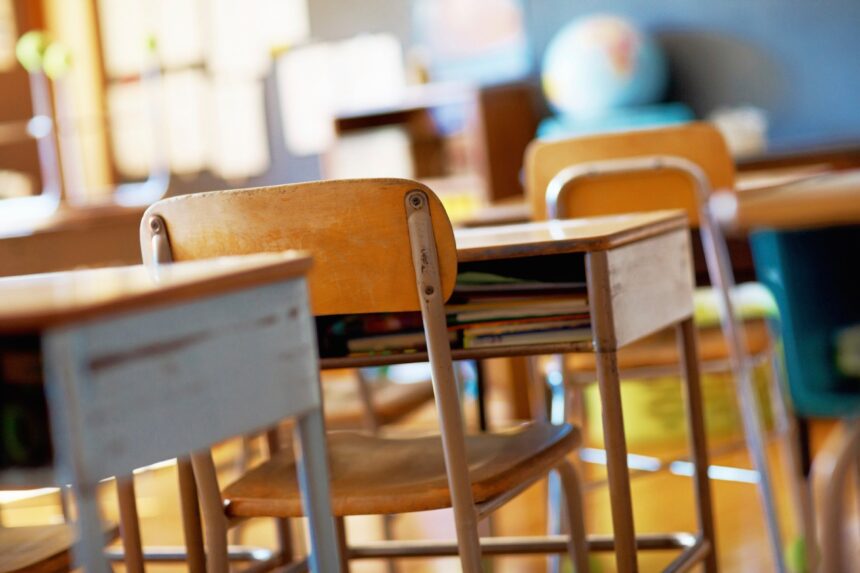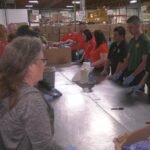As I write this week’s column from a quiet corner of the Peterborough Victoria Northumberland and Clarington Catholic District School Board office, the tension is palpable. Parents nervously check their watches, board administrators shuffle paperwork, and union representatives speak in hushed but urgent tones. The atmosphere reflects the growing anxiety across Ontario’s education landscape.
The latest battleground in Ontario’s education sector emerged last week when CUPE education workers raised alarm bells over significant staffing cuts within the Peterborough Victoria Northumberland and Clarington Catholic District School Board. These reductions, affecting 19 full-time equivalent positions across custodial, maintenance, and clerical staff, have sparked immediate pushback from the Canadian Union of Public Employees Local 1453.
“We’re deeply concerned about the impact these cuts will have on students and the remaining staff who are already stretched thin,” said Liz James, president of CUPE Local 1453, during an impromptu gathering of concerned staff I attended Tuesday morning. “How are we supposed to maintain the same level of clean, safe learning environments with fewer hands on deck?”
According to information shared by the union, the cuts represent approximately 10% of the custodial and maintenance workforce. The board has characterized these reductions as necessary adjustments to align with enrollment changes and budgetary constraints—a familiar refrain echoing through educational institutions across the province.
Having covered education policy shifts for nearly a decade, I’ve noticed a troubling pattern. These cuts follow similar reductions announced earlier this year at several other Catholic and public boards, including the Toronto Catholic District School Board, which eliminated dozens of positions in February. Ontario’s education funding formula, a complex calculation that determines how much money flows to each board, has been criticized by education advocates as chronically underfunded since its introduction in the late 1990s.
Data from the Ministry of Education shows that while enrollment has stabilized or increased marginally in many regions, operational funding hasn’t kept pace with inflation or the expanded responsibilities schools now shoulder. According to Statistics Canada, education worker wages have fallen behind inflation by approximately 11% over the past decade when adjusted for purchasing power.
Parents I’ve spoken with express particular concern about cleanliness standards as COVID-19 continues to circulate. “My daughter has asthma, and I worry about what fewer custodians means for air quality and regular cleaning,” shared Maria Fernandez, mother of a Grade 4 student at St. Catherine Catholic Elementary School. “We haven’t forgotten what happened during the pandemic.”
School board trustees, caught between provincial funding constraints and local needs, face difficult choices. Board chair Michael Thompson defended the decision in a statement provided to Mediawall.news: “These adjustments, while difficult, reflect our responsibility to be fiscally prudent while maintaining educational excellence.”
Thompson noted that the board explored multiple options before settling on these reductions, including administrative efficiencies and postponement of capital projects. However, union representatives counter that frontline workers shouldn’t bear the brunt of financial pressures.
Education policy expert Dr. Helen Westbrook from Queen’s University points to broader systemic issues. “What we’re seeing across Ontario isn’t simply about individual board decisions—it’s the culmination of how we fund education,” she explained during our phone conversation yesterday. “Boards are essentially being asked to do more with less each year, and eventually, something has to give.”
The timing of these cuts is particularly challenging as schools prepare for the 2024-25 academic year. Remaining staff will need to absorb additional responsibilities, potentially leading to what CUPE describes as “impossible workloads” and increased stress.
Walking through St. Paul’s Catholic Secondary School last week, I witnessed firsthand the existing pressures on support staff. A single custodian was managing multiple tasks—mopping hallways, addressing a minor plumbing issue, and preparing spaces for an evening community event. “We’re already running flat out,” the worker told me, requesting anonymity due to concerns about speaking publicly. “I don’t know how we’ll manage with fewer people.”
The Ministry of Education, when reached for comment, emphasized that staffing decisions remain within the purview of individual school boards. “Boards receive funding based on established formulas and retain autonomy in how those resources are allocated,” a spokesperson noted via email.
However, this explanation provides little comfort to affected communities. At a parent council meeting I attended Thursday evening, concerns extended beyond cleanliness to questions about supervision, emergency response capabilities, and overall school environment.
“Support staff are the backbone of our schools,” remarked council chair Sophia Williams. “They’re often the first faces our children see in the morning and the last they see before heading home. These aren’t just positions—they’re people who form relationships with our kids.”
CUPE has launched a community awareness campaign and is exploring options to challenge the cuts. Meanwhile, affected workers face uncertainty about their futures just as summer approaches.
For the broader Ontario education community, these local reductions raise unsettling questions about sustainable funding models and priorities. As boards across the province finalize their budgets for the coming year, many are watching the PVNC situation as a potential harbinger of wider challenges.
Standing in the parking lot after Tuesday’s meeting, I watched as education workers dispersed to their vehicles, some consoling colleagues who received layoff notices. One veteran custodian of 22 years summed up the sentiment: “Schools aren’t just buildings that need cleaning. They’re second homes for these kids. And right now, it feels like we’re being told to care for more homes with fewer caretakers.”
As summer approaches and attention typically shifts away from education matters, the question remains whether these concerns will generate enough public momentum to prompt reconsideration—or whether September will bring a new reality of doing more with less in Ontario’s Catholic schools.
Daniel Reyes reports on political and social policy issues from communities across Ontario. You can reach him at dreyes@mediawall.news with story tips or feedback.






